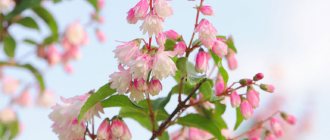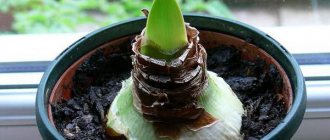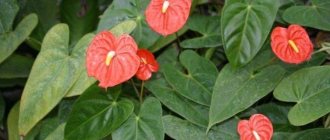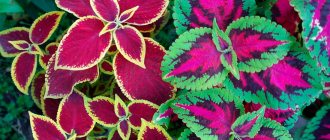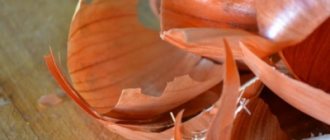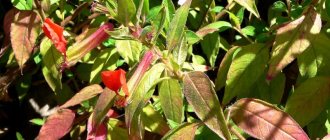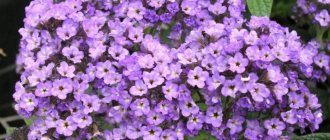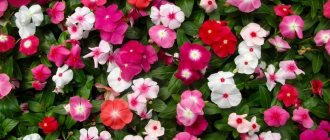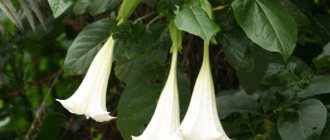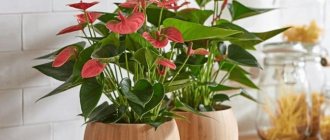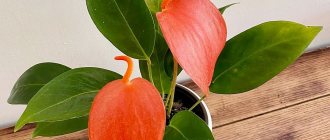Anthurium and spathiphyllum are a real decoration for the home. Anthurium was brought to Europe back in the 19th century. However, it attracted the attention of flower growers only at the end of the last century. This culture is represented not only by flowering varieties, but also by decorative foliage forms, vines, which are distinguished by expressive variegated foliage. All these types need to create comfortable growing conditions. How to plant and care for anthurium at home, what varieties are most in demand at the moment - the article will tell you about all this.
Botanical description and names
Anthurium andreanum is an evergreen perennial of the Anthurium genus and belongs to the large aroid family. The Anthurium genus has more than 800 species. The herbaceous plant grows as a terrestrial and epiphytic flower, and can grow into voluminous branching vines.
Reference! Literally translated, the name of the plant means “flower” and “tail,” which characterizes the structure of the flower itself. People call this flower “male happiness”, “flamingo flower”.
Anthurium flower. Anthurium care
Anthurium is an exotic plant with beautiful glossy flowers of red, white or pink, in the middle of each of which rises a spadix of white, yellow, green, brown or purple. From spring to late summer, these beautiful and eye-catching plants bloom. There are more than 700 varieties of anthurium. In some species, the flowers are inconspicuous, but the leaves with contrasting veins immediately attract attention. Under natural conditions, anthurium grows in the forests of tropical America and on the islands of the Pacific Ocean.
Caring for anthurium is not easy. So if you have not yet purchased this amazingly beautiful flower, then weigh the pros and cons. On the one hand, it is difficult to find a person who will pass by such an amazing flower. On the other hand, such a handsome man requires proper care. Anthuriums are not easy to keep indoors. They are demanding on watering, lighting and air humidity.
An exception is Anthurium scherzerianum, one of the most common types of these plants. It is most adapted for indoor living.
How to care for anthurium
Anthurium has a superficial (shallow) root system, so to maintain it it is necessary to use wide, low pots with good drainage and loose soil. Anthurium is a heat-loving plant. He needs good lighting, but does not like direct sunlight. The best place for the plant is east and west windows. The flower does not like cold rooms (minimum temperature 15 ºС in winter), drafts and feels comfortable at temperatures not lower than 18-20 ºС and high humidity. To achieve high humidity in our climate zone, special attention must be paid to spraying and watering. It is necessary to water the plant according to the condition of the soil, making sure that it does not dry out or become waterlogged. Use water at room temperature, and in winter it is recommended to water the flower with warm water. Anthurium needs to be sprayed frequently. In summer, at least once a day (on average twice a day). On hot days, the number of sprays must be increased and the condition of the plant must be constantly monitored. Lack of moisture manifests itself in the curling of the leaves of the plant. Anthurium flowers do not like moisture, so when spraying, try to spray water only on the leaves of the plant. In winter, the number of sprayings can be reduced, and possibly even abandoned. For the winter, find a place for the flower with enough daylight.
With good care, anthurium can bloom from February to November.
The plant must be replanted once every two years, but do not allow the soil to become over-compacted. Feed with weak fertilizers during the flowering period.
Average:
Your rating: Empty Average: 4.6 (408 votes)
fitoteka.rutxt.ru
History of origin, description of appearance and geography of habitat
The first classification of the Anthurium genus was made in the 19th century.
Austrian botanist Heinrich Schott. Later in the 20th century. German botanist Gustav Engler grouped known species into 18 sections. In modern floriculture, Schaeffer's classification is used, which identifies 19 main groups of the Anthurium genus. Among them is a large species of Anthurium Andre. The plant's homeland is considered to be the tropical regions of South America, southwestern Colombia, and Ecuador. The habitat of natural species is rocky mountain slopes, tropical forest trees, rocky areas.
Anthurium Andre (anthurium andrianum in Latin) is a rather large flower. In nature it can grow up to 1 - 1.5 m. At home, the height of the plant reaches 80 - 90 cm. The stems are knotty and form thin aerial roots. The leaves are large, bright green, glossy. The length of the leaf plate is 20 -30 cm, width - 10 - 12 cm. The petioles are long, dense, up to 20 - 30 cm. The inflorescence is a yellow spadix, up to 10 cm in length. After fertilization, round fruits of orange color are formed on the cob.
The bract is a glossy covering, may be leathery, heart-shaped. The surface of the bedspread is streaked with relief veins. The color of the bedspread is bright red. Hybrid subvarieties can have pink, white, yellow bract colors (we talked about varieties with white flower color here, and read about pink varieties here). Flowering is long-lasting, up to 6 – 8 months. The plant blooms at the end of winter and lasts until autumn.
Anthurium Turenza: characteristics
This plant always needs a place where it could grow, so as a rule, first it is grown at home, and then the house is decorated with it. This genus includes about 500-900 different species of lianas, but mostly there are epiphytes that grow on tropical trees, which range in size from the very base of the tree to its crown.
There are also special types that are intended only for rocks and rocky rocks. Central and South America are considered to be the birthplace of Anthurium. The photo is shown in the article.
The leaves of this plant are always varied; they can have both a heart-shaped and rounded shape, as well as dissected. The top layer of the plant can be matte or glossy in color. In conditions of high humidity in the tropics, it has the ability to direct its leaves towards the sun.
But the main thing about this plant is the unique color of its flowers, from the brightest colors to dark shades. The flowers of this plant can bloom all year round, but only with sufficient lighting, which is not enough in the tropics, the flowers can last for a long time (about a month and a half).
Reference! A huge advantage is that the flower is not afraid of cutting and can stand in water for a month, which will delight you every day with its beautiful petals and flowers.
Popular subspecies of Anthurium andreanum and their photos
Turenza
Hybrid compact variety, grows up to 50 – 60 cm in height. The leaves are shiny and dense. It is distinguished by pronounced veins on the dark green surface of the leaf blade. The bedspread is bright red. Grows well at home.
Red
The leaves are large, shiny, bright green. The leaves are heart shaped. The inflorescence is a large spike, located on the very cover of the flower. The bedspread is large, glossy, rich red. The height of an adult bush is up to 70 cm.
We talked about red anthuriums in this material.
Champion
The bush is compact, plant height up to 60 cm. The foliage is dark green and large. The leaf plate is glossy. The ears are straight and may have a pinkish or yellow tint. Bracts - spathes, depending on the andraeanum subcultivar, can be pink (Pink) or white (White).
Mix
To create colorful group mixes, several varietal varieties of andre anthurium, differing in the shade and size of leaves and bracts, can be planted in one container (or one bed). For example, delicate bedspreads of Andre Silens anthurium will go perfectly with pink Andre Favorite anthurium. The bright, rich red varieties Otazu and Belize will favorably emphasize the spectacular dark shades of the Fiorino and Black Queen varieties (read about black anthuriums here, and the Black Prince (Black Queen) variety is discussed in this material).
We talked about the types and varieties of anthuriums here.
Signs and superstitions
There are many signs and superstitions about anthuriums among flower growers. They say that this flower is a talisman for a happy life for spouses. He not only preserves the love and mutual understanding of the couple, but also removes all adversity and misfortune from the family. However, there is one caveat: in order for a plant to have magical qualities, it must be presented to the spouses as a gift. Therefore, anthurium is considered a good alternative to a bouquet of cut flowers for a wedding anniversary.
Anthurium, its cultivation and care at home is what inexperienced lovers of indoor floriculture are primarily interested in, looking at its majestic and solemn appearance. There is no need to be afraid, having studied all the subtleties and features of this plant, you can not only enjoy its excellent flowering for a long time, but also without much difficulty breed it, giving as a gift a little of your warmth and magical “family happiness”.
How to care for a houseplant at home?
Temperature
The optimal air temperature in spring and summer is 22 – 25 °C. In autumn, the temperature should be reduced to 18°C.
Watering
In summer, abundant watering is required in small doses 2 - 3 times a week. The soil should be slightly moist in spring and summer.
Important! Complete drying of the substrate is unacceptable.
In the fall, the watering schedule changes. It is enough to moisten the soil once every 7–10 days. Water for irrigation should be warm, up to 30 °C. You need to add a few drops of lemon juice and vinegar to the water. Immediately after watering, excess water should be drained; getting the roots wet provokes the appearance of rot.
In hot weather, leaf spraying should be added to increase air humidity. Open containers with water should be placed next to the flowerpots. Also, to increase humidity, the soil in the pot is mulched with damp moss. Optimal air humidity is 80 – 90%.
Light
The lighting should be bright, but somewhat distant and diffuse. Direct sunlight causes burns on large leaves - brown spots.
It is advisable to choose the western and eastern parts of the house. Windows are shaded from the scorching sun with white paper or a light curtain. The northern arrangement of flowers requires additional lighting with special lamps.
Due to lack of light, the plant does not form flower buds.
Priming
Regular garden soil is not suitable for tropical flowers. The mixture should be nutritious, acidified, loose, and well permeable. For planting, you can use a ready-made mixture for orchids.
Composition of the soil mixture:
- Humus - 2 hours.
- Leaf soil (unsifted) – 1 tsp.
- Peat – 1 hour.
- Sand – 1 hour.
- Drainage.
Drainage layer - broken brick, pieces of charcoal, moss - sphagnum.
Important! You can add a little vermiculite and small pieces of pine bark to the soil for breathability.
Trimming
Pruning is necessary for an adult flower to rejuvenate the bush. The procedure is carried out in early spring during transplantation.
Trimming scheme:
The side stems are cut out along with the roots for further propagation.- The tops of the shoots along with the aerial roots are cut off for cuttings.
- For long flowering, faded buds are cut off.
The central trunk with roots is not cut off.
After pruning, watering should be reduced by half until new lateral rosettes of leaves form.
We invite you to watch a video about rejuvenating the Anthurium Andre bush:
Feeding
The plant should be fertilized in spring and summer once every 10-14 days. In early spring, you should feed the flowers with urea or ammonium nitrate. Nitrogen fertilizers promote the growth of leaves and stems.
During the formation of buds and the entire flowering period, complex mineral fertilizers should be used, which contain trace elements of zinc, potassium, magnesium, and iron. It is recommended to use ready-made fertilizers for flowering plants and orchids.
Attention! To form inflorescences, it is necessary to fertilize all year round, strictly observing the regime and dose of fertilizers.
Pot
When transplanting, the container is selected in accordance with the size of the root. Anthurium Andre does not bloom in containers that are too large. The pot should be compact and not too deep.
Be sure to make drainage holes at the bottom of the pot for air access and water drainage after watering.
Transfer
Young flowers require annual replanting. Adult bushes are planted once every 2–3 years for rejuvenation. Transplantation is carried out in the spring.
Transplantation scheme:
The top mulch layer is removed from the pot.- The entire bush is carefully removed.
- Damaged roots and dry stems are trimmed.
- Using the transshipment method, the bush is placed in a new pot with a drainage layer of up to 2 cm.
- The root is sprinkled with a new substrate.
- The earthen lump becomes slightly compacted.
- The top surface is mulched with moss and peat.
Wintering
During the winter months, Andre's anthurium enters a dormant state. In winter, the pots are moved to a cool place, the air temperature is 15 - 16°C.
Important! The plant reacts poorly to sudden daily air changes, drafts and temperature drops of up to 10 °C.
The soil is moistened carefully, the main thing is to prevent the earthen clod from drying out. Leaves should not be sprayed in winter; dust on the leaves should be removed with a damp cloth once a week . During this period, it is necessary to feed the flowers with potassium and sodium humate once every 2–3 weeks through watering.
We invite you to watch a video about home care for this plant:
Our readers are recommended to familiarize themselves with information about other varieties of anthurium. Read about the following varieties: Princess Amalia Elegance, Cavalli, Dakota, Hooker, Scherzer, Utah, as well as crystal, orange and climbing anthuriums.
Transplantation: when, how often and how
Young people under four years of age are recommended to replant every year, choosing a pot slightly larger than the previous one. This is due to the intensity of their growth. Replanting is done carefully, avoiding damage to the roots, so the entire lump of substrate from the previous pot, along with its contents, moves into the new pot.
For specimens older than 4 years, transplantation is often accompanied by separation of the lateral root processes and is performed every 2-4 years:
- To do this, buy a pot with a slight difference in volume compared to the old one, since it is important to keep the roots of Anthurium andreanum in close quarters. The optimal time for transplantation is February-March.
- You need to replant using the transshipment method, preserving the substrate. The flower will endure this procedure less painfully.
- If the root system looks healthy, then nothing additional needs to be done. Before replanting, it must first be watered to make it easier to remove from the pot. If among the roots you can see rotten, brown ones, they need to be cut off and the cut area treated with activated carbon.
Reproduction
Seeds
In home floriculture, this method is practically not used. Seeds can only be obtained through artificial pollination. Additional seed treatment with a weak solution of manganese is required to prevent diseases.
To grow seedlings, greenhouse conditions are required, a constant air temperature of 25 °C.
Seedlings bloom only 4–5 years after sowing the seeds.
By cuttings
Rooting procedure:
- A part of the stem with aerial roots is separated from the mother bush.
- The separated parts are transplanted into separate small pots for rooting.
- The top shoots are cut off from an adult bush.
- The stem is divided into several parts, 5–7 cm each.
- Spacious containers are used.
- The cuttings go deeper into the soil.
- The greenhouse is covered with film.
- Rooting takes place within 3 – 4 weeks.
Reference! Separation of side shoots and rooting of cuttings is carried out in early spring.
How to revive a flower
It happens that as a result of improper care or illness, the anthurium looks dead:
- the leaves dry up,
- the stem does not grow,
- There is no talk of flowering at all.
You can try to revive the plant. To do this, you need to ruthlessly cut off all the above-ground parts, and remove the roots from the pot and carefully examine them.
If roots with a growing point are preserved, they must be carefully separated. Remove all darkened and dead areas, sprinkle the sections with ash.
Then you need to deepen the roots into a new pot with the prepared sterile mixture, moisten and cover with film.
If resuscitation measures are effective, then after 2-3 weeks the first green shoots can be observed.
Diseases and pests
- Damage to leaves by anthracnose (dry leaf edges) is treated by spraying with a solution of foundationazole.
- The shield is removed manually. The stems are pre-treated with an alcohol solution.
- Spraying the bushes with a soap solution will get rid of spider mites. You need to water the flower with Actellik solution.
- Stagnation of water and damp soil cause putrefactive infections. Sanitary pruning, replanting, and soil replacement are required.
- Brown leaf spotting is a lack of fertilizer.
Signs associated with the flower “male happiness”
It is believed that the flower of male happiness stabilizes the financial condition of the family; along with its growth and development, the family budget also increases.
The flowering of exotic flowers will also bring money into the house; the larger the inflorescence and the longer the flowering, the more money you can expect. For both women and men, this plant brings extremely positive changes. Women will find beautiful, happy love, and everything will work out for men in this regard.
It is believed that anthurium growing in the bedroom near the marital bed can even increase potency.
The most common among exotics, and among other domestic flowers, anthurium is beautiful, regardless of the type. It’s nice that even a beginner can handle growing a flower. Anthurium is especially liked by those gardeners who believe in omens: both beauty and happiness in the house at the same time.
Similar flowers
Spathiphyllum cupido. The height of the flower is about half a meter. The leaves are large and rich green. The bedspread is wide, pointed, pale white.- Spathiphyllum Picasso. The height of the bush is up to 40 cm. The leaves are long, shiny, pointed. The bedspread is voluminous, the colors are motley.
- Alocasia Klobuchkovaya. The leaves are dense and wide. The spathe is fleshy, the spadix is of medium length.
- Calla Swamp. The leaves are dark green, heart-shaped, smooth. The cob is oblong. The bedspread is flat and white.
- Calla Elliott. Distinguished by abundant flowering. The bedspread is bright yellow and long. The leaves are green with white spots.
To grow a healthy and rich Andre anthurium bush and achieve bright flowering, you should strictly adhere to the rules of care, follow the feeding regime and carry out timely rejuvenation of the plant.
Anthurium varieties Andre and Scherzer by color
There are a huge number of hybrid forms of “male happiness” and there are more and more of them every day.
We present the most popular and affordable Andre and Scherzer anthurium varieties with names and photos, and also indicate less common forms. White
The most popular white varieties: “Champion White” (White champion, white champion), “Sumi” (Sumi). White and pink: “Princess Amalia Elegance” (Princess Amalia Elegance).
"Champion White" (White champion, white champion), "Sumi" (Sumi) and "Princess Amalia Elegance" (Princess Amalia Elegance).
Red
The most famous red varieties: “Dakota” (Dakota), “Sierra Magic” (Sierra Magic), “Turenza (Perfectred)” (Turenza).
Red-green: Anthurium adrianum 'Baby Boom'.
Others: Almera, Bugatti Veyron, Champion Red, Dynamite Red, Red King, Royal Champion" (Royal champion), "Success Red" (Success ed).
"Dakota" (Dakota), "Sierra Magic" (Sierra Magic), "Turenza (Perfect red)" (Turenza) and "Baby Boom" (Baby Boomer).
Orange
Orange variety: "Picasso Orange" (Picasso orange).
Orange-red forms: "Baby Orange", "Madural Orange", and also "Princess Orange".
"Picasso Orange", "Baby Orange" and "Madural Orange"
Pink
Pink varieties: “Joli” (Jolie), “Lady Love” (Lady Love), “Pink Alabama” (Pink Alabama) and “Pink Champion” (Pink Champion, pink).
Other forms: “Picasso Pink” (Picasso pink, pink), “Pink King” (Pink King), “Pink Queen”.
"Joli" (Jolie), "Pink Alabama" (Pink Alabama) and "Pink Champion" (Pink Champion, pink).
Pink-green: “Fantasy Love” (Fantasy Love), “Leganza” (Leganza), “Pandola” (Pandola).
“Fantasy Love” (Fantasy Love), “Leganza” (Leganza) and “Pandola” (Pandola).
Violet (lilac or lilac)
Purple varieties: Cavalli Purple, Fiorino and Utah. Also an interesting option: “Picasso Purple” (Picasso purple).
"Cavalli Purple" (Cavalli Purple), "Fiorino" (Fiorino) and "Utah" (Utah).
Blue and blue anthurium: painted or not?
“Male happiness” does not have a gene for blue or blue color (pigment), therefore, it is impossible to breed a variety with a similar color of the bedspread. According to specialists from the Faculty of Biology of Moscow State University, the samples presented today are flowers painted using special ink injections into the peduncle.
For example, the Dutch company offers the blue anthurium variety “Princess Alexia Blue” and the bright yellow flower “Princess Alexia Yellow” using this technology. Famous blue variety: "Picasso Blue" (Picasso blue (blue)).
"Picasso Blue" (Picasso blue (blue)) and "Princess Alexia Blue" (Princess Alexia blue).
Yellow
“Picasso Yellow” (Picasso yellow), “Princess Alexia Yellow” (Princess Alexia yellow), “Vanilla” (Vanilla, vanilla).
“Picasso Yellow” (Picasso yellow), “Princess Alexia Yellow” (Princess Alexia yellow) and “Vanilla” (Vanilla, vanilla).
Green
"Baby Green", "Green King", "Midori", "Picasso Green".
"Baby Green", "Green King", "Midori" and "Picasso Green".
Black (chocolate)
The most popular black varieties: “BlackBeauty” (Black Beauty, black beauty), “Black Queen” (Black Queen, black queen) and “Otazu” (Otazu).
Rarer varieties: “BlackDragon” (Black Dragon, black dragon), “BlackLove” (Black Love, black love).
“Black Beauty” (Black beauty, black beauty), “Black Queen” (Black queen, black queen) and “Otazu” (Otazu).
Variegant varieties of anthurium
Variegant varieties of anthurium have in their structure a certain number of mutant cells that cannot produce chlorophyll. Because of this feature, parts of the plant that have a large number of such cells remain white or noticeably lighter than the main color of the leaf.
Variegant variety of anthurium
Thanks to the efforts of breeders, anthurium varieties with variegated leaf coloring have been developed. Of course, it has not yet been possible to achieve uniformly discolored parts of the leaf, but unusual-looking anthurium leaves, partially colored in different tones, already exist, although they are not yet very popular.
Every year more and more varieties and hybrids of anthurium are produced, they become more and more exotic and, of course, surprise experienced flower growers, and simply delight people who are not related to plant growing. Once you see this tropical flower, it is impossible to forget it, and more and more people want to buy it to decorate their home.
